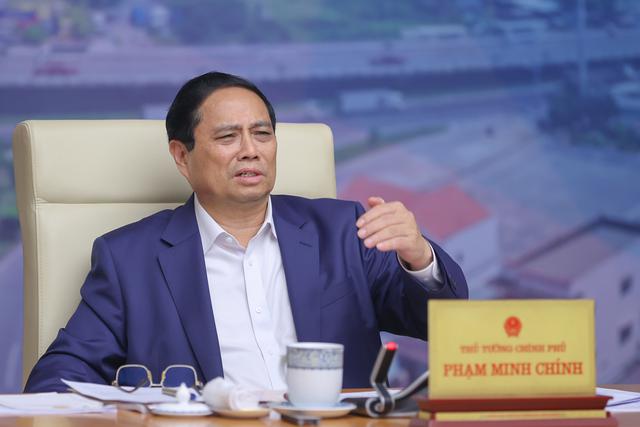In a high-stakes review on May 8, Prime Minister Pham Minh Chinh issued an impassioned rallying cry to officials - expedite critical infrastructure upgrades across the country and finish at least three to six months ahead of schedule by any means necessary.
His stern directives and admonishments underscored just how pivotal these transport projects have become to advancing Vietnam's economic development ambitions.
Expressway Targets Loom Large
A key priority is hitting the expressway targets set out at the Communist Party's 13th congress in 2021. Vietnam must have an operational 3,000 km network by 2025, up from around 2,000 km currently following the recent opening of routes like the 80 km Cam Lam-Vinh Hao expressway.
The more distant goal is amassing 5,000 km of expressways by 2030.
Substantial progress has already been made on the massive North-South Expressway, which will traverse over 2,100 km when complete, linking provinces from the Chinese border down to the Mekong Delta region near Cambodia.
Construction has commenced on sections like the 60 km stretch to the Chi Lang border gate.
Ring roads around major cities like Hanoi and Ho Chi Minh City also form part of this grand expressway vision aimed at improving trade logistics and decentralizing economic clusters away from the major urban hubs.
Airport Ambitions Take Flight
Alongside roads, Vietnam is keenly focused on enhancing its aviation infrastructure to accommodate booming tourism and air freight volumes.
The crown jewel is Long Thanh International Airport, a new $15 billion air gateway near Ho Chi Minh City eventually intended to ease strain on the existing Tan Son Nhat airport.
According to the Ministry of Transport, work on pivotal components like the passenger terminal are progressing on schedule, with the steel roof structure expected to be erected by September 2024.
Construction of runways and road connectors is also said to be on track for Long Thanh's targeted 2026 opening date repeatedly affirmed as non-negotiable by policymakers.
Another aviation project underway is Terminal T3 at Tan Son Nhat airport in Ho Chi Minh City, likely aimed at providing interim capacity relief until Long Thanh is fully operational.

Land Acquisition Bottlenecks
However, land acquisition has emerged as a major obstacle impeding the pace of implementation, particularly for the ring road projects around Hanoi and Ho Chi Minh City.
Resettling residents and relocating technical infrastructure like power lines have fallen behind schedule.
Bristling at these delays, PM Chinh set a second quarter 2024 deadline for provinces to resolve all outstanding land disputes, relocations and compensation issues related to the 500kv transmission line.
He instructed provincial leaders to elevate any unresolved cases to central authorities for intervention.
Similar land acquisition bottlenecks have held up progress on other key expressway projects like the Gia Nghia-Chon Thanh and Bao Loc-Lien Khuong routes in southern provinces. PM Chinh has tasked his deputy Tran Hong Ha to coordinate solutions by leading a dedicated task force to engage with provincial representatives.

Material Supplies Constrained
Aside from land hurdles, streamlining access to construction materials like sand sourced from the ocean for landfill works represents another pressing challenge.
PM Chinh has directed the deputy PM to convene urgent meetings with Mekong Delta provinces this month to fast-track approvals and unblock administrative bottlenecks.
At project sites, contractors have been assigned into relentless multi-shift operations around the clock with barely a pause, in an atmosphere the premier gleefully termed having "no downtime, just lightning speeds". But the hectic pace is taking a toll, with safety audits and environmental preservation being stressed as co-equal priorities by the PM.
Underpinning the coordinated blitz is also a political motive - delivering a suite of completed projects by 2024 and 2025 carries symbolic significance. These years respectively mark the 70th anniversary of Hanoi's liberation, the 80th birthday of Vietnam's People's Army, 50 years since reunification, and 90 years of independence.
The Road Ahead
All told, Vietnam faces a formidable array of challenges from funding shortfalls to community dislocations and environmental impacts as it pursues this grand transport infrastructure vision. Missteps could imperil its aspirations of emulating China's infrastructure-led economic rise.
How deftly the leadership navigates this high-stakes agenda of political prestige, fiscal prudence and sustainable development will prove crucial in determining if Vietnam can vault into upper-middle or high-income status. For the Southeast Asian nation, the road ahead appears littered with as many potholes as opportunities for soaring economic acceleration.









 Google translate
Google translate